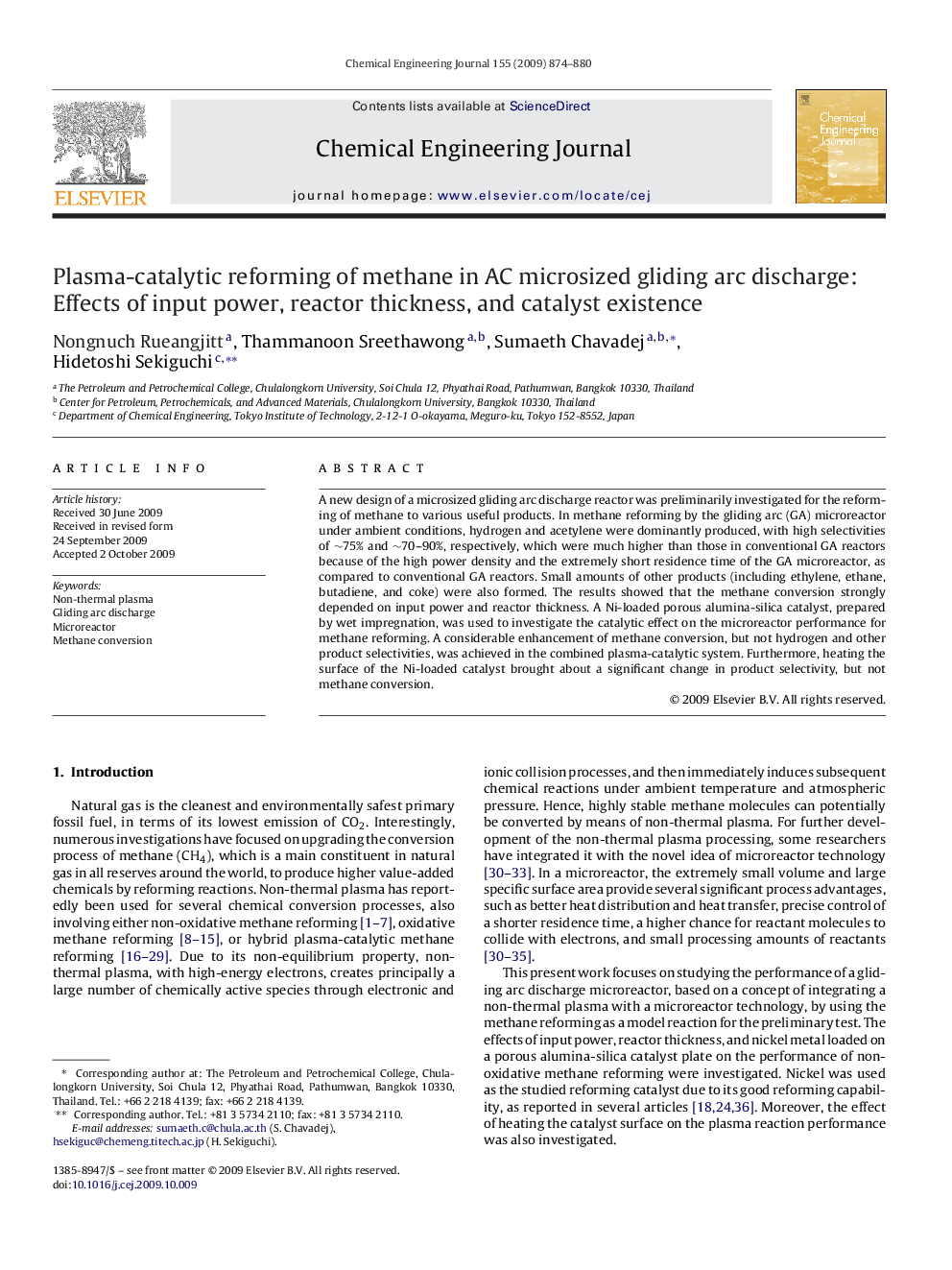| Article ID | Journal | Published Year | Pages | File Type |
|---|---|---|---|---|
| 151908 | Chemical Engineering Journal | 2009 | 7 Pages |
A new design of a microsized gliding arc discharge reactor was preliminarily investigated for the reforming of methane to various useful products. In methane reforming by the gliding arc (GA) microreactor under ambient conditions, hydrogen and acetylene were dominantly produced, with high selectivities of ∼75% and ∼70–90%, respectively, which were much higher than those in conventional GA reactors because of the high power density and the extremely short residence time of the GA microreactor, as compared to conventional GA reactors. Small amounts of other products (including ethylene, ethane, butadiene, and coke) were also formed. The results showed that the methane conversion strongly depended on input power and reactor thickness. A Ni-loaded porous alumina-silica catalyst, prepared by wet impregnation, was used to investigate the catalytic effect on the microreactor performance for methane reforming. A considerable enhancement of methane conversion, but not hydrogen and other product selectivities, was achieved in the combined plasma-catalytic system. Furthermore, heating the surface of the Ni-loaded catalyst brought about a significant change in product selectivity, but not methane conversion.
